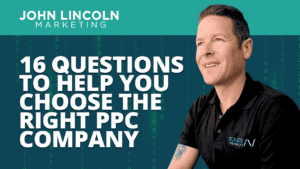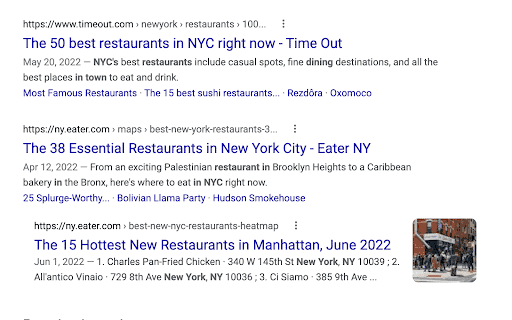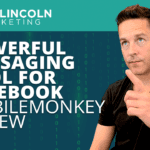
Top 16 Questions to Ask a PPC Company in 2024
In 2024, choosing the right PPC company is not just about spending your advertising budget. You want to make every cent count towards your business
You’re working on your content marketing and have a solid social media presence. You’ve also made sure you’re taking the proper steps to ensure your website is as optimized as possible.
But there might be one tactic you’re overlooking when boosting your business: local SEO marketing.
So what is local SEO? How does it work? Let’s talk about it.
There are many ways to improve your website and rank higher on SERPs. One of those ways is through local SEO marketing strategies.
Local SEO is a marketing method that involves optimizing a website according to local searches. When incorporated correctly, this practice will increase traffic, brand awareness, and your number of weekly leads.
According to Search Engine Roundtable, 46% of Google searches have local intent. We could attribute this to the fact that more people are searching on their mobile devices.
Often, these “Googlers” will search for businesses that are physically close to them. This is because they have something to do, and they want to accomplish it as quickly as possible. In fact, according to Google, 76% of those searchers will visit a business the same day they searched for it.
Regardless of why they’re searching for local businesses, if you aren’t optimizing your content to appease those local searches, you could miss out on a ton of traffic.
In local SEO marketing, you must pay attention to the Map Pack.
Also known as the Local Pack, it refers to the top three listings on the SERP. Google returns the business name, reviews, and location on a Google map. It also lists the business’ NAP, or name, address, and phone number.

If you run a local brick-and-mortar business, it is obvious why you would want to get your business listed in one of these three spaces.
Beneath these highlighted results, you’ll find the top-ranking organic results.

Aim for the top-ranking organic results if you cannot get your business listed in the top 3 NAP results. To do this, optimizing your content for “business type + city/state” keywords is essential.
The likelihood that a searcher will scroll past these top results, especially if searching in a hurry, is pretty slim. Your greatest chance of driving traffic to your business is to appear in these top results.
Some of what goes into the Map Pack is slightly out of your control. For example, location. If someone searches for “coffee NYC”, Google will consider where that search is physically located and return coffee shops within a small radius.
However, you can improve your chances of ending up on a searcher’s Map Pack through tools like Local Falcon. This local SEO marketing tool will monitor your competitors’ rank positions through a multi-point grid. Then, it predicts what Google will place on the SERP and gives you tips on how to make your listing one of those coveted three.
Those top 3 Map Pack spots are crucial. However, that doesn’t mean you should ignore the organic results. These results are also significant and receive a high amount of traffic.
To optimize for these spaces, follow tried-and-true SEO practices. Off-page SEO, technical SEO, title tag optimization, and backlinks are all critical for your organic ranking SEO.
The only difference between local SEO marketing and regular SEO tasks is that you want to include your location in your keywords.
If you want your business to be returned for a certain keyword or group of keywords, you need to work for it.
The best news about local SEO keyword research? You don’t need to update it constantly like blog keyword research. It is usually a one-and-done task.
A short list of keywords is all you need to get started. Luckily, you can use various online tools and software to help you come up with this list.
One of our favorites is Google Suggest.
This one is super similar. Open Google and start typing in a keyword you want to optimize your site for. Pay attention to the auto word completions that appear. These are some of the most popular keywords associated with the term you are typing.
You can also use Yelp Suggest.
This tool works the same way as Google Suggest. Once you start typing, it will reveal additional related keywords. The cool thing about Yelp Suggest is that it will often return different but similar keywords, giving you even more ideas of keywords to use.
For example, if you search “sushi”, Yelp will also return related keywords such as “Asian Fusion,” “Japanese,” or “Chinese.” This will expand your local SEO marketing keyword search to include keywords you may not have thought of.
If you have a Google Ads account, you can also use Google Keyword Planner.
Google Keyword Planner exists within the Google Ads dashboard. You can use two tools, “Discover New Keywords” or “Get Search Volume and Forecasts.”
With this tool, you can find new keywords and check to see how your existing ones are performing. If they aren’t performing well, figure out which ones would be better.
Local SEO Marketing Guide: Optimize Your Google My Business Profile
A lot of businesses ignore their Google My Business profile. But if you want to see success with your local SEO marketing, don’t be one of those businesses.
Consistency: One piece of advice that I can give you for Google My Business: be consistent! Inconsistency is a huge red flag to Google.
All the information that you enter to Google My Business should match your website and your NAP citations around the web to build Google’s confidence that your business is legitimate.
Completed Profile:
The second piece of advice is to make sure your Google My Business profile is complete.
Be sure to hit every selection, including your category selection. Then, add your secondary categories and fill in the “Services” and “Products” tabs. The more information Google has to pull from, the better.
Update Your Critical Business Data
Is a holiday affecting your opening hours? Update your Google My Business profile!
Did you adjust your hours for the season? Update your Google My Business profile!
The more accurate and up-to-date this information is, the better.
Encourage Positive Reviews
As you know, reviews are huge for local SEO marketing.
Encourage your users to leave reviews and be sure to reply to every single review, regardless of whether it’s positive or negative. Show Google, and your potential customers, that you care about improving your business and are open to constructive criticism.
Want to improve your efforts beyond the basics listed in this local SEO guide? There are a variety of advanced tips and strategies that you can use.
Create Unique Content
Whether you have one location or 100, ensure you’re improving your on-page SEO by creating unique content for each location. The content on your page for your New York City location should differ completely from the content for your Long Island location.
You can also do this if you don’t have physical locations in these areas but are still close to these towns. For example, if your business is in Queens, you can optimize your content for surrounding areas such as Brooklyn or The Bronx.
Did you know that there is an entire category of schema markup for local businesses?
Here you can markup your NAP. This will increase your odds of appearing in those coveted organic search positions.
The current Google title tag limit is 500-600 pixels or 50 characters. Use this to your advantage by creating an open loop. Make searchers want to click on your title to find out more about your business.
Run a NAP Audit
Making sure your NAP is consistent everywhere is going to take some time.
You can use a citation tool such as WhiteSpark or Loganix to locate every place your NAP is mentioned online. Make sure that it is correct and consistent in every space.
Like any other form of SEO, quality backlinks are a big part of your local SEO marketing strategy.
Whatever you do, stay away from link-buying schemes. Google will see through these like the spam they are. Focus more on building quality relationships through PR strategies.
Google makes this one easy for you. Now it’s time to make it easy for your customers. Find your business on Google maps and click on the dropdown menu in the top left corner. Click “Share or embed map.” Take this code and insert it on your About Me, Contact, or Directions page.
1. What is Local SEO Marketing?
Local SEO marketing is the practice of increasing traffic and building brand trust and awareness through local searches.
2. What does NAP stand for?
NAP stands for Name, Address, and Phone Number.
3. What is the most important aspect of local SEO marketing?
There are many things that go into a local SEO marketing strategy. The most important? Consistency! You want to make sure you’re posting often and that all of your content, including your NAP, is consistent across all of your platforms.
4. Does my Google My Business profile affect my local SEO marketing tasks?
Yes! Google My Business is a free tool. Completing and optimizing your GMB profile will improve your local SEO marketing and show customers you are the real deal.
Welcome to John Lincoln’s personal website. On this website, we offer courses by John Lincoln, review software, publish articles and videos. You can also learn about John Lincoln’s books, films, book him to speak and contact him. John is directly associated with many of the businesses mentioned on this website and freely discloses this information.

John Lincoln is CEO of Ignite Visibility, one of the top digital marketing agencies in the nation. Ignite Visibility is a 4x Inc. 5,000 company. Ignite Visibility offers a unique digital marketing program tied directly to ROI with a focus on using SEO, social media, paid media, CRO, email, Amazon and PR to achieve results. Outside of Ignite Visibility, Lincoln is a frequent speaker and author of the books “Digital Influencer” and “The Forecaster Method.” Lincoln is consistently named one of the top digital marketers in the industry and was the recipient of the coveted Search Engine Land “Search Marketer of The Year” award. Lincoln has taught digital marketing and Web Analytics at the University of California San Diego since 2010, has been named as one of San Diego’s most admired CEO’s and a top business leader under 40. Lincoln has also made “SEO: The Movie” and “Social Media Marketing: The Movie.” His business mission is to help others through digital marketing.
Want to get in touch with John Lincoln? Click Here To Reach Out.

In 2024, choosing the right PPC company is not just about spending your advertising budget. You want to make every cent count towards your business

Whether you’re a seasoned marketer or just starting out, conversion rate optimization (CRO) is a powerful tool that can boost your sales, leads, and overall

Feeling overwhelmed by the sea of SEO companies out there? You’re not alone! Choosing the right partner is crucial for achieving your online marketing
 Powerful Messaging Tool for Facebook: Mobile Monkey Review
Powerful Messaging Tool for Facebook: Mobile Monkey Review How would you like to work with a messaging tool that gives you direct access to people in your target